Abstract
Rats discriminated auditory intensity differences of sinusoids at 3.0 kilohertz in a go/no-go signal detection procedure. Responses to the signal (hits) were reinforced with electrical brain stimulation, and misses produced a brief timeout. On intermixed noise trials, withholding of responses (correct rejections) was reinforced, and false alarms produced the time-out. In two test conditions, the signal was either the louder (100 decibels) or softer (90, 93, 96, or 99 decibels) of the pair of intensities presented within a set of trials. Each animal was first trained with signal value louder or softer, and reversed for the second condition so that the former noise value served as signal. Hits showed shorter latencies than false alarms, regardless of the relative intensity of signal and noise, and the magnitude of differentiation was proportional to signal-noise separation. Both hits and false alarms showed longer latencies as the discrimination became more difficult. Isosensitivity contours derived from the latencies showed close similarity across conditions; in comparison, the yes-no measure of detectability, d', showed greater variability. The similarity of latency differentiation across louder and softer signal conditions supports a detection model in which the observer's judgment is controlled by the distance of sensory effect from criterion on each trial, as opposed to the loudness of the tones per se.
Full text
PDF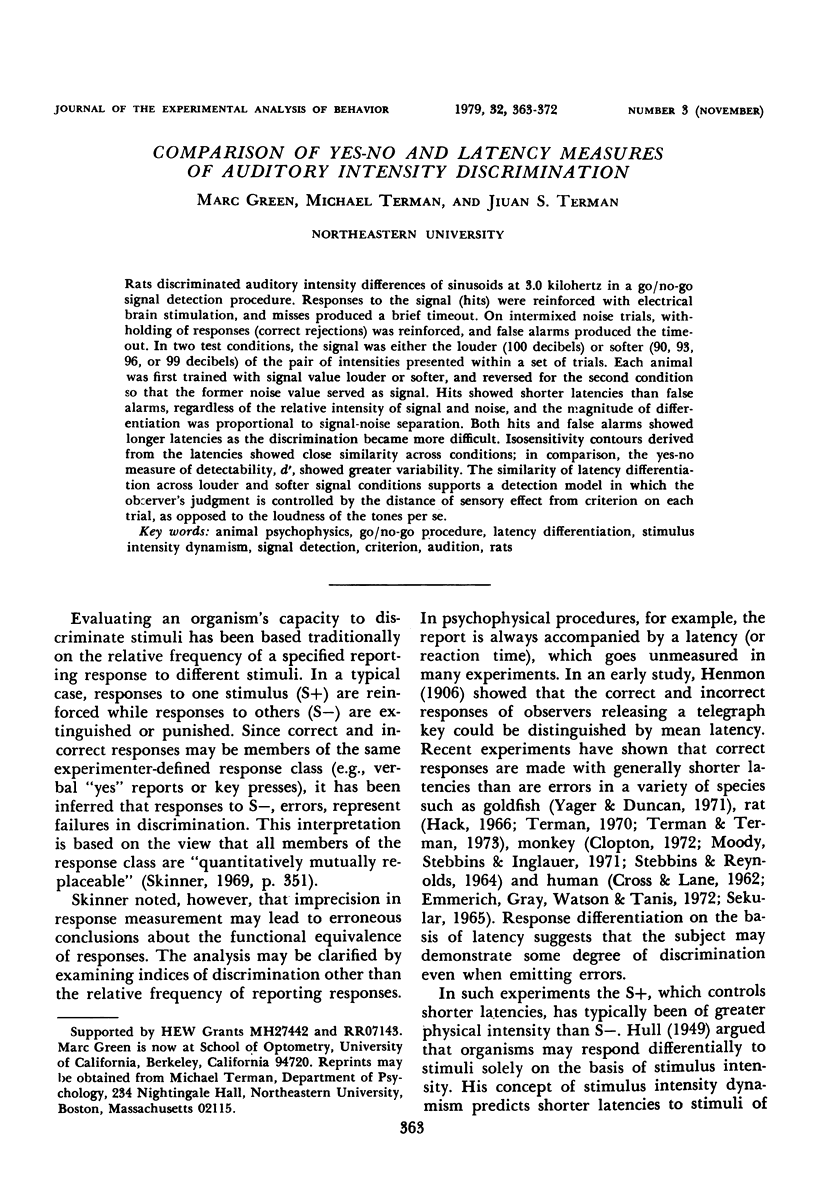
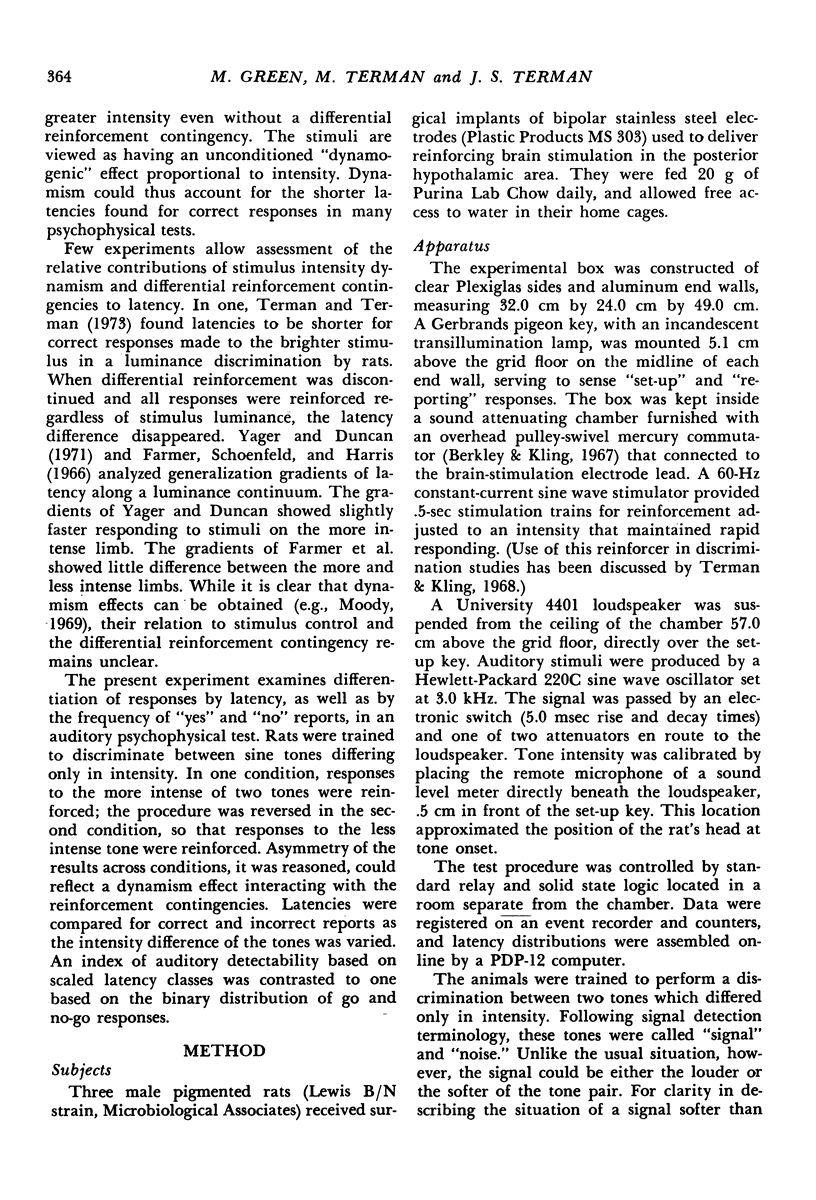
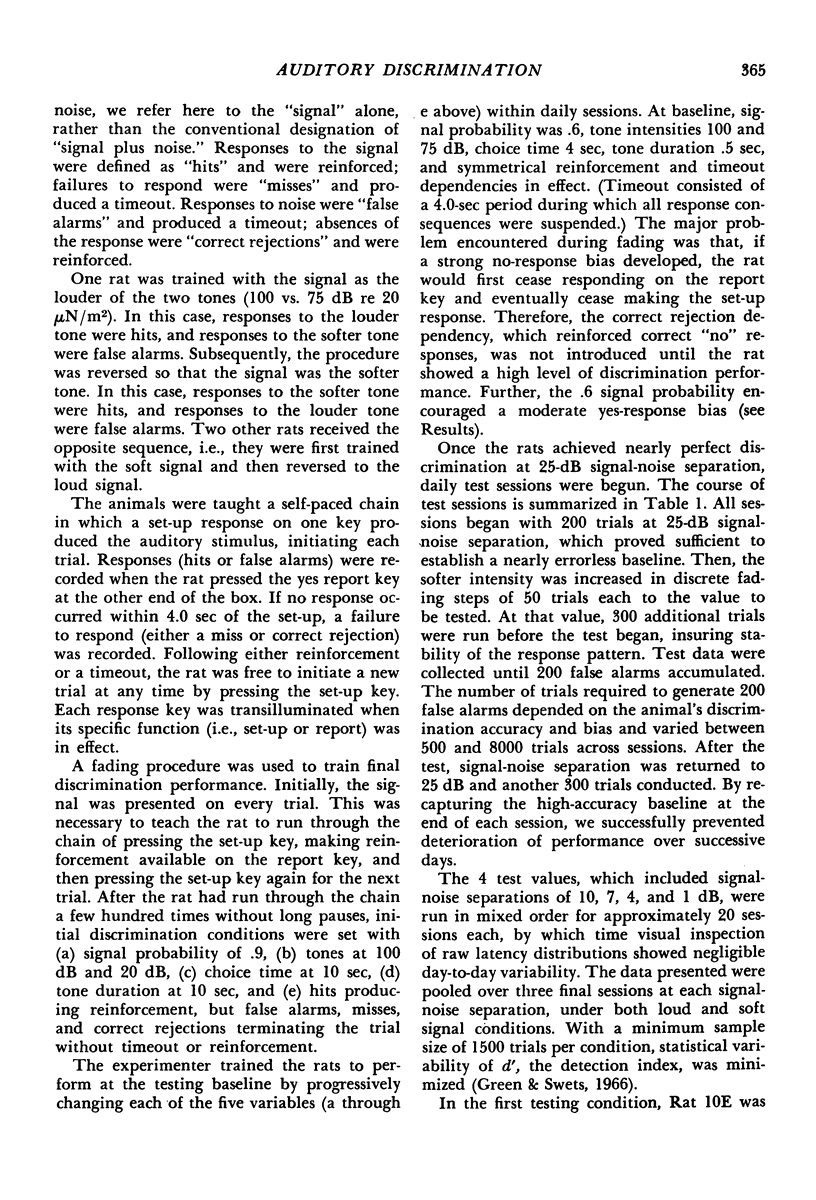
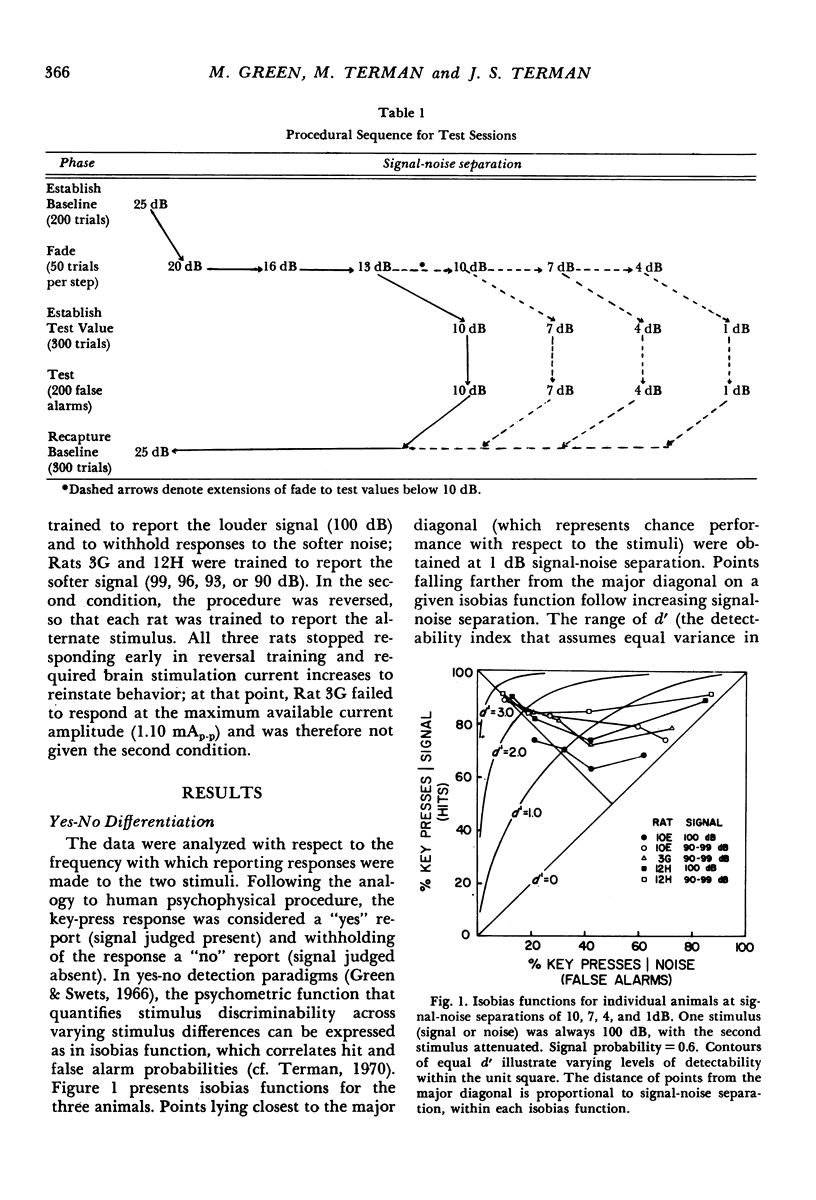
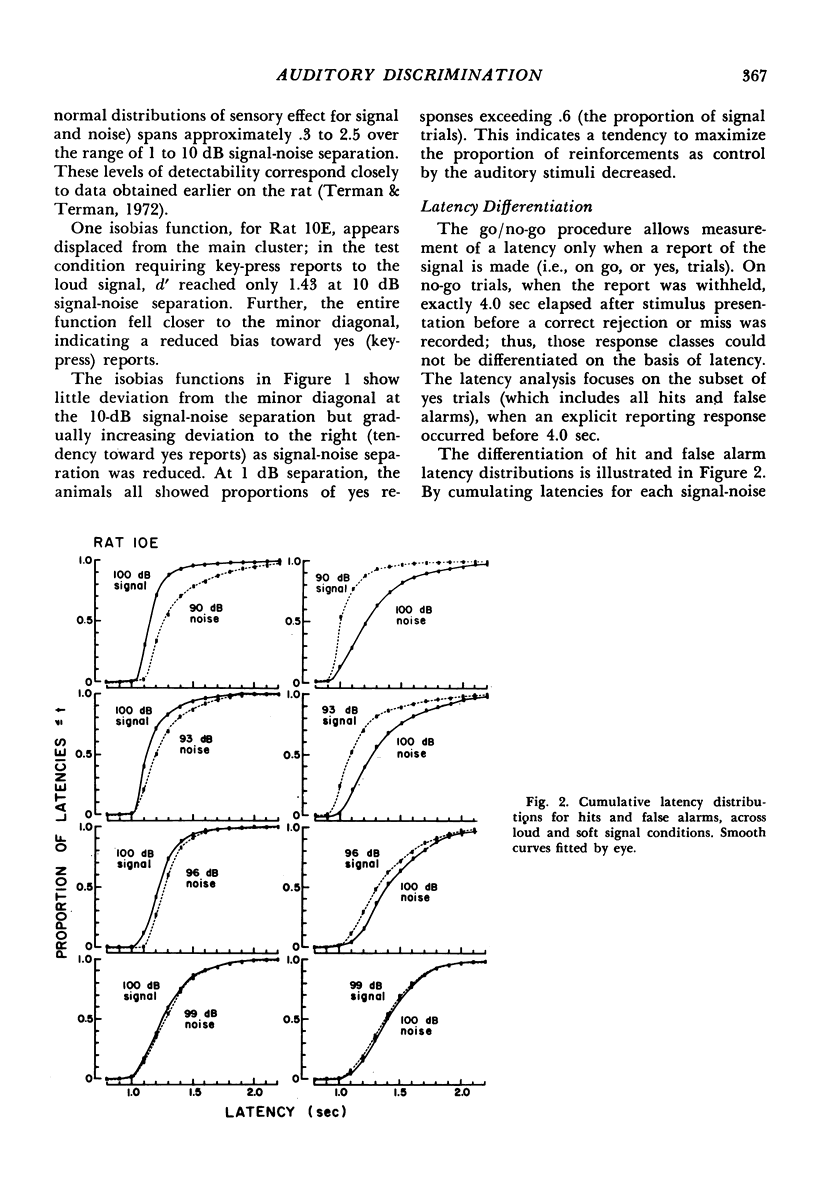


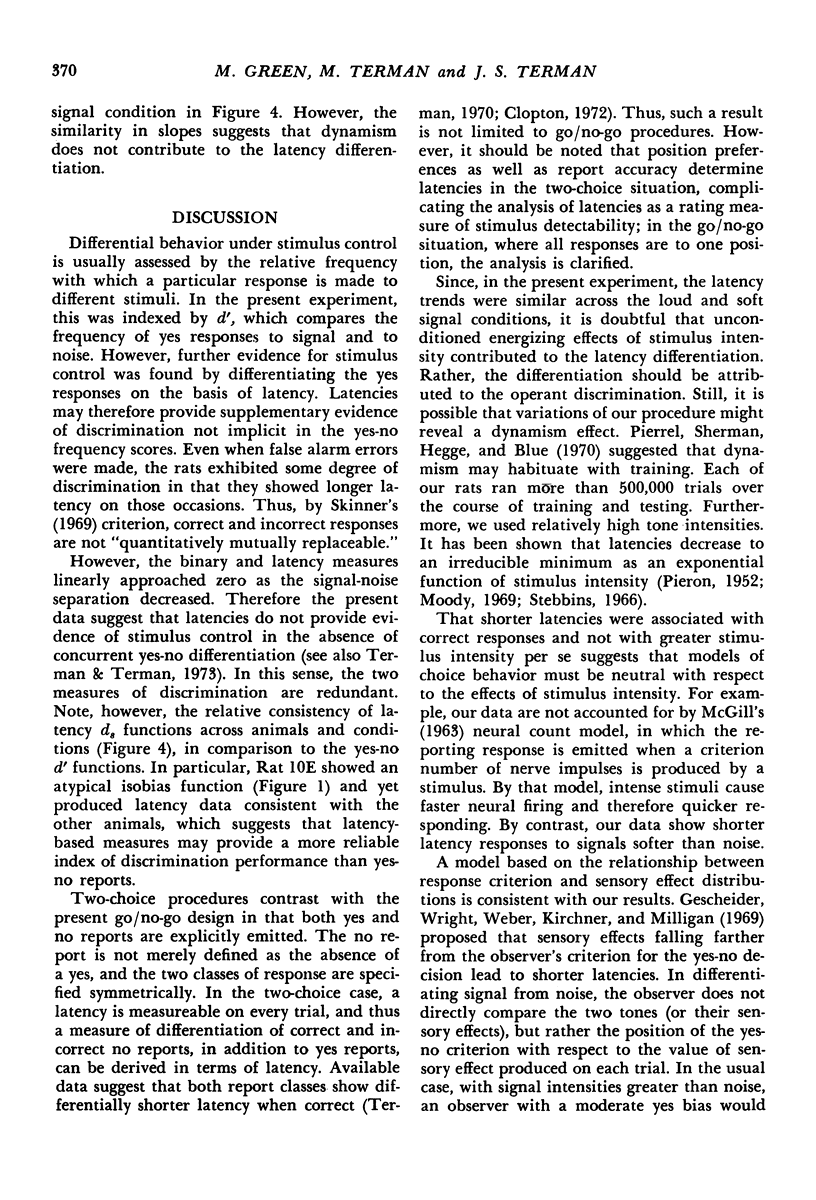
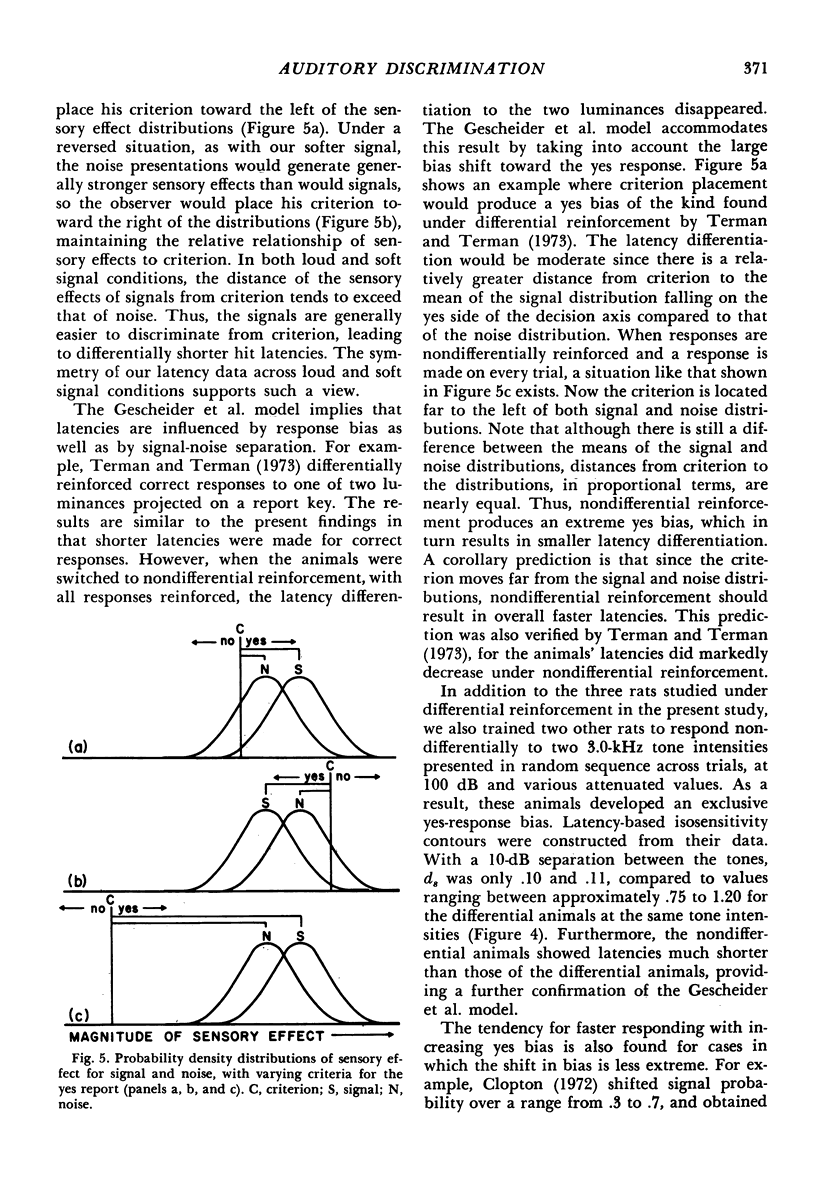
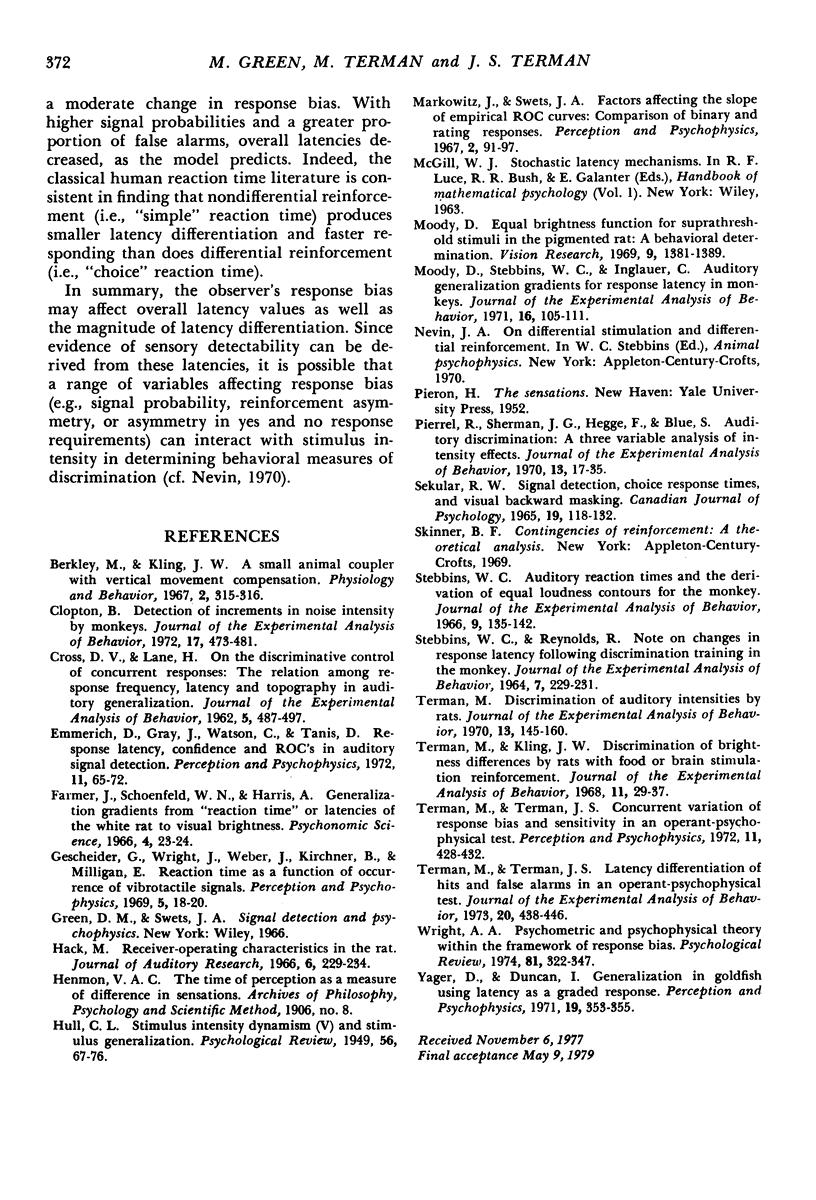
Selected References
These references are in PubMed. This may not be the complete list of references from this article.
- CROSS D. V., LANE H. L. On the discriminative control of concurrent responses: the relations among response frequency, latency, and topography in auditory generalization. J Exp Anal Behav. 1962 Oct;5:487–496. doi: 10.1901/jeab.1962.5-487. [DOI] [PMC free article] [PubMed] [Google Scholar]
- Clopton B. M. Detection of increments in noise intensity by monkeys. J Exp Anal Behav. 1972 May;17(3):473–481. doi: 10.1901/jeab.1972.17-473. [DOI] [PMC free article] [PubMed] [Google Scholar]
- Moody D. B. Equal brightness functions for supra-threshold stimuli in the pigmented rat: a behavioral determination. Vision Res. 1969 Nov;9(11):1381–1389. doi: 10.1016/0042-6989(69)90074-1. [DOI] [PubMed] [Google Scholar]
- Moody D. B., Stebbins W. C., Iglauer C. Auditory generalization gradients for response latency in the monkey. J Exp Anal Behav. 1971 Jul;16(1):105–111. doi: 10.1901/jeab.1971.16-105. [DOI] [PMC free article] [PubMed] [Google Scholar]
- Pierrel R., Sherman J. G., Blue S., Hegge F. W. Auditory discrimination: a three-variable analysis of intensity effects. J Exp Anal Behav. 1970 Jan;13(1):17–35. doi: 10.1901/jeab.1970.13-17. [DOI] [PMC free article] [PubMed] [Google Scholar]
- SEKULER R. W. SIGNAL DETECTION, CHOICE RESPONSE TIMES, AND VISUAL BACKWARD MASKING. Can J Psychol. 1965 Jun;19:118–132. doi: 10.1037/h0082895. [DOI] [PubMed] [Google Scholar]
- STEBBINS W. C., REYNOLDS R. W. NOTE OF CHANGES IN RESPONSE LATENCY FOLLOWING DISCRIMINATION TRAINING IN THE MONKEY. J Exp Anal Behav. 1964 May;7:229–231. doi: 10.1901/jeab.1964.7-229. [DOI] [PMC free article] [PubMed] [Google Scholar]
- Stebbins W. C. Auditory reaction time and the derivation of equal loudness contours for the monkey. J Exp Anal Behav. 1966 Mar;9(2):135–142. doi: 10.1901/jeab.1966.9-135. [DOI] [PMC free article] [PubMed] [Google Scholar]
- Terman M. Discrimination of auditory intensities by rats. J Exp Anal Behav. 1970 Mar;13(2):145–160. doi: 10.1901/jeab.1970.13-145. [DOI] [PMC free article] [PubMed] [Google Scholar]
- Terman M., Kling J. W. Discrimination of brightness differences by rats with food or brain-stimulation reinforcement. J Exp Anal Behav. 1968 Jan;11(1):29–37. doi: 10.1901/jeab.1968.11-29. [DOI] [PMC free article] [PubMed] [Google Scholar]


